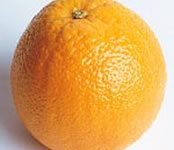| |
 Ageing is not a disease. Changes in our body, its physical
function and performance will occur in all of us. While
we cannot turn back the clock in terms of our chronological
age, we can do much to reduce the risk of many health problems
as a result of poor eating habits, a sedentary lifestyle
and smoking. It is never too late to make some improvements
to our lifestyle and the time to start is now. Ageing is not a disease. Changes in our body, its physical
function and performance will occur in all of us. While
we cannot turn back the clock in terms of our chronological
age, we can do much to reduce the risk of many health problems
as a result of poor eating habits, a sedentary lifestyle
and smoking. It is never too late to make some improvements
to our lifestyle and the time to start is now.
As we enter our 30s and 40s and approach our 50s and 60s
we start to notice changes in our body. Some changes, such
as the onset of menopause for women in their 40s -50s,
occurs regardless of their overall physical condition.
It is at this time bone loss is accelerated, so women need
to be prepared in order to prevent osteoporosis in later
life. Men too can suffer from osteoporosis and they are
most likely to develop an osteoporosis fracture in their
60s.
As we reach our 50s and 60s our muscle mass may decrease
and our body fat increases 1 . Mild vitamin and mineral
deficiencies are common in older people and these have
been associated with an increasing propensity for developing
infections, bruising, stroke and some cancers.
At any time in our life, reduced physical activity leads
to a lower metabolic rate that requires less food be eaten
to maintain the same body weight. In order to maintain
a healthy body weight, keep physically active. Try activities
such as walking, dancing, swimming and especially those
activities that build muscle strength and continue to enjoy
eating.
It is important to consult your doctor before embarking
on a new physical fitness and diet regime.
Food is more than a source of energy; it can contribute
to our long-term health. By considering the following guidelines
in your food choices you will be able to get more out of
life:
Plant foods are known to provide a range of nutrients
that are needed for good health. Attention is focussing
on the possible protective effects of plant foods against
certain diseases. These natural protective substances are
known as phytochemicals. Phytochemicals provide colours,
flavours and natural protection against diseases in plants.
Did you know that an orange contains over 170 known types
of phytochemicals?
Studies have shown that people who consumed diets high
in fruits and vegetables showed a reduced risk of cancer,
heart disease and diabetes Type 2, when compared to those
consuming lower quantities.
The table below lists three types of phytochemicals that
can be found in a variety of plant foods:
Phytochemical |
Health
benefit |
Food
source |
Phytoestrogens |
protection
against cardiovascular disease |
Soy products
such as tofu and soymilk Flaxseed/linseed. |
Flavanoids |
reduced
risk of cancer, thrombosis and coronary heart disease |
Green
tea, apples, berries, red cabbage, cherries and red
grapes. |
Sulfide
compounds |
reduced
risk of cancer and the lowering of cholesterol production
rates within the body. |
Garlic,
cauliflower, broccoli and brussel sprouts. |
While consuming phytochemical-rich
foods can offer protection from various diseases, we should
aim to increase our consumption of nutrients such as calcium,
folate, vitamins B6/B12 and zinc as we approach middle
age in order to attain good overall health. By doing so
we can help prevent disease and illness in the short term
and continue to be an active and vital member of our community.
Vitamin/Mineral |
Health
Benefit |
Food
Source |
Calcium |
Reduction
of bone loss and avoidance of bone fractures in later
life. |
Dairy
products, orange juice, fish with bones, such as
sardines and green leafy vegetables. |
Zinc |
Plays
an important role in wound healing and immunity to
disease. |
Beef,
ham and chicken. |
B6 |
Found
to improve blood circulation and long-term memory. |
Bananas,
legumes and fish. |
B12 |
Assists
in the availability of folate to cells in our body. |
Eggs,
seafood, and dairy products. |
Folate |
Low intakes
can result in an increased risk of cardiovascular
disease and anaemia. |
Folate
can be found in fortified breakfast cereals. It can
also be sourced from consuming cabbage, spinach,
wholemeal bread and peanuts. |
The inclusion of phytochemical-rich
foods into your diet and other nutrient rich foods need
not be complicated. In most cases, the inclusion of fruit
and vegetables is all that it takes. The key to success
is moderation and balance. Be adventurous and try new foods
and combinations at every opportunity.

|

